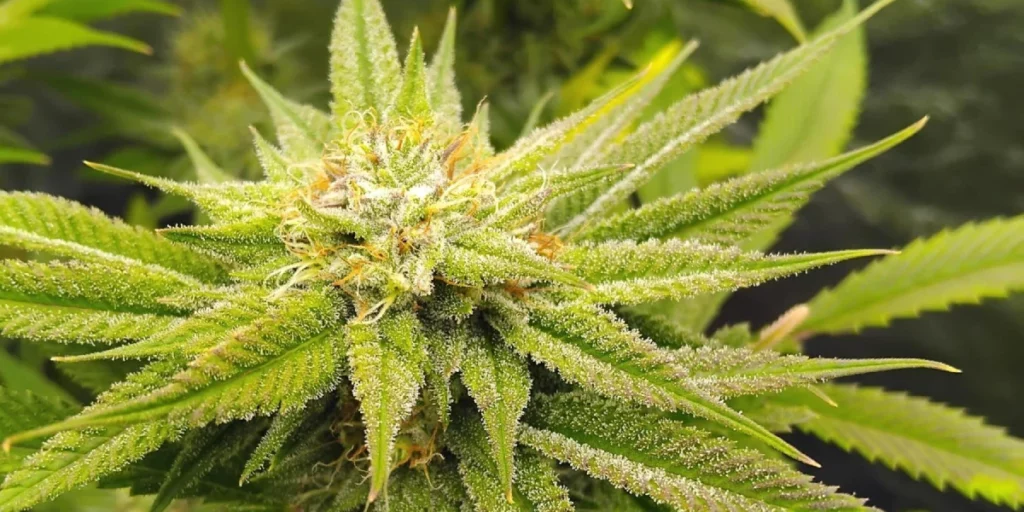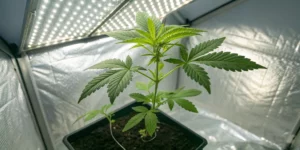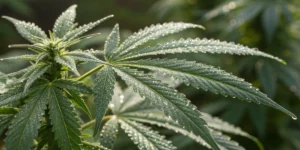Lemon Orange Strain: Exceptional Genetics and Effects
Origins and Genetics
Lemon Orange Strain is the result of a carefully engineered genetic blend that infuses the plant with bright, citrus flavors and robust growth characteristics. Its auto-flowering trait simplifies cultivation by triggering flowering based on age rather than light cycles, making it ideal for growers with limited space. The compact plant exhibits a predictable growth pattern and consistent yields, thanks to its stable genetic background that combines the best attributes of both indica and sativa varieties.
The heritage of this strain has been refined over generations to produce a plant that thrives in diverse environments. Its unique genetics ensure that every harvest delivers high-quality, resinous buds with a distinctive citrus aroma, appealing to both recreational and medicinal users.
Effects and Potency
Lemon Orange Strain delivers an uplifting yet balanced high that stimulates the mind while offering gentle body relaxation. With THC levels maintained within a moderate range, it provides a crisp, clear-headed buzz accompanied by a subtle soothing effect. The flavor profile explodes with a refreshing blend of lemon and orange, accented by herbal undertones that create a uniquely invigorating aroma. Users enjoy an experience that sparks creativity without overwhelming sedation.
The balanced effects make this strain versatile for daytime use when focus is needed, as well as for early evenings when a calm, manageable high is preferred. Its consistent potency and vibrant flavor profile have made this strain a favorite among those who appreciate a bright, citrus-forward experience.
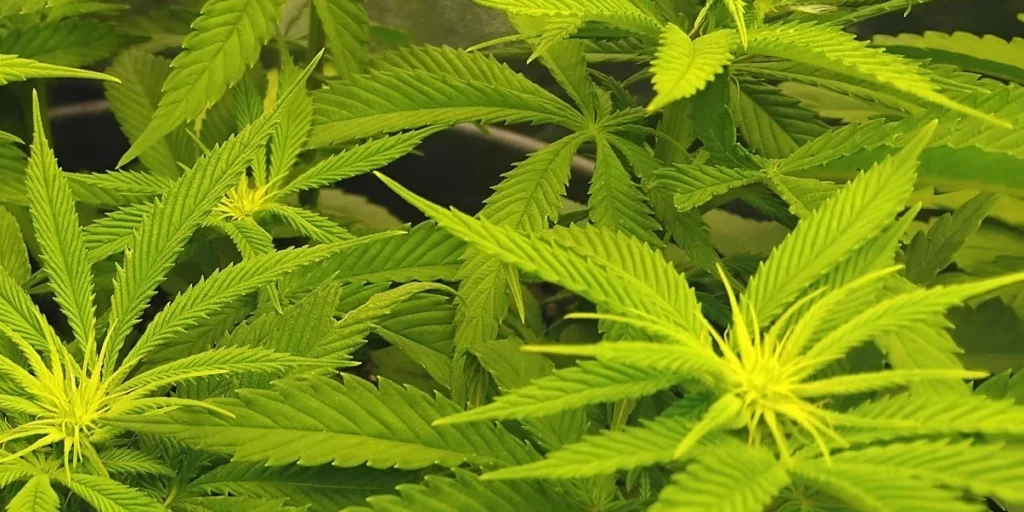
Environmental Requirements for Growing Lemon Orange Strain
Setting Up the Growing Cannabis Space
Creating an optimal grow space is crucial for achieving high-quality Lemon Orange buds. A well-organized area with proper ventilation, controlled lighting, and stable temperature and humidity conditions supports the plant’s natural growth. Whether you opt for a dedicated grow room, a small grow tent, or a compact indoor setup, the space must be kept clean and equipped with essential tools such as fans, carbon filters, and timers. This careful arrangement minimizes plant stress and fosters vigorous, healthy development throughout the growth cycle.
Temperature and Humidity
Maintaining consistent temperature and humidity is vital for the healthy development of Lemon Orange Strain. During the vegetative stage, temperatures between 70°F and 80°F promote robust growth, while slightly lower temperatures during flowering enhance resin production in the buds. Humidity should be maintained around 50–60% initially and then reduced to 40–50% during flowering to prevent mold and mildew. These specific parameters enable the plant to absorb nutrients efficiently and develop steadily, ensuring a bountiful harvest.
Stable environmental conditions reduce stress and help avoid issues such as nutrient lockout and pest infestations. Reliable tools like thermostats and hygrometers allow for quick adjustments, keeping the growing conditions optimal throughout the plant’s life cycle.
Indoor Cannabis Cultivation
Advantages of Growing Indoors
Indoor cultivation offers complete control over environmental factors, making it particularly beneficial for growing this strain. This method protects the plant from unpredictable weather and pests while allowing you to fine-tune light, temperature, and humidity for optimal bud production. Every variable, from nutrient delivery to airflow, can be managed precisely, resulting in uniform, high-quality buds even in limited spaces.
The predictability of indoor growing also facilitates year-round production, regardless of seasonal changes. Whether in a compact room or a dedicated grow area, indoor setups enable consistent adjustments that lead to robust growth, enhanced resin production, and a final product that meets high standards of quality and potency.
Lighting Needs
For indoor cultivation, proper lighting is a cornerstone of success. Full-spectrum LED or HPS lights provide the energy needed for vigorous vegetative growth and dense bud development during flowering. Position the lights at an optimal distance from the canopy to avoid heat stress while ensuring even light distribution across the plant. This setup promotes efficient photosynthesis and helps Lemon Orange Strain achieve its full potential.
A consistent light schedule, typically an 18-hour light and 6-hour dark cycle during the vegetative phase, followed by a 12/12 cycle during flowering, is essential. If you’re propagating clones of Lemon Orange Strain, check out our guide on the best light for clones to ensure your young plants receive optimal lighting from the start.
Check out this guide on autoflower 24-hour light to explore the benefits and techniques for maximizing your autoflower yields.
Stable lighting conditions encourage the formation of dense, resinous buds and contribute significantly to overall yield.
Outdoor Cannabis Cultivation
Best Conditions for Outdoor Growth
When grown outdoors, Lemon Orange Strain thrives under sunny, warm conditions with ample natural airflow. Choose a location that receives at least six hours of direct sunlight daily; natural light enhances terpene production and intensifies the citrus flavors in the buds. The soil should be well-draining and enriched with organic matter to support vigorous growth and high yields.
In addition, a favorable outdoor environment requires protection from extreme weather conditions such as heavy winds or intense rain. Select a sheltered spot that provides plenty of sunlight while minimizing environmental stress. With careful site selection and proper management, outdoor cultivation of this strain can yield impressive results that rival those produced indoors.
Advantages of Growing Lemon Orange Strain
Fast Growth Cycle
A key advantage of Lemon Orange Strain is its rapid growth cycle, enabling a quick transition from seed to harvest. This fast development allows for multiple cycles in a single year, making it ideal for growers with limited space or time. Its efficiency leads to timely yields and offers a practical option for busy cultivators seeking prompt results without sacrificing quality. The quick cycle also encourages continuous experimentation and refinement in cultivation techniques, ensuring every harvest is both impressive and consistent.
Exceptional Flavor and Potency
Renowned for its refreshing, citrus-infused flavor and balanced potency, Lemon Orange Strain delivers a robust, aromatic experience with bright, tangy notes and subtle herbal undertones. Its moderate to high THC levels provide a well-rounded high that satisfies both recreational and medicinal users. The appealing taste and reliable effects ensure that every session is smooth, memorable, and thoroughly enjoyable, setting it apart as a popular choice among cannabis enthusiasts.
Problems in Cultivating Lemon Orange Strain
Overwatering
Overwatering is a common pitfall that can damage the delicate root system of this strain. Excess moisture leads to root rot and fungal infections that stunt growth and diminish bud quality. It is crucial to allow the soil to dry slightly between waterings and to use containers with proper drainage to maintain an optimal moisture balance. Adjusting your watering schedule based on the plant’s needs rather than following a fixed routine is essential to prevent overhydration.
Pest Infestations
Pests such as spider mites, aphids, and thrips can quickly undermine the health of this strain if left unchecked. Regular inspections and the use of organic pest control measures help keep these threats under control. Early detection and prompt treatment are critical to preventing widespread infestations that could compromise both yield and bud quality. Implementing natural predators and organic sprays is an effective strategy for managing pests.
Mold and Mildew
Mold and mildew are significant concerns during the flowering stage when dense buds create a humid microenvironment. High humidity and poor airflow can trigger fungal growth that damages the plant and reduces bud quality. To mitigate these risks, it is essential to control humidity, improve ventilation, and promptly remove any affected areas. Regular inspections and timely environmental adjustments help preserve the overall quality and potency of the harvest.
Advanced Pest Control for Cannabis Growing
Integrated Pest Management
Integrated Pest Management (IPM) combines natural predators, organic pesticides, and proper sanitation practices to manage pest populations effectively. This balanced approach minimizes the need for harsh chemicals while maintaining a healthy ecosystem that benefits Lemon Orange Strain. Early intervention and regular monitoring are key components of IPM, ensuring that pest levels remain in check and plant health is preserved.
Organic Pesticides
Organic pesticides such as neem oil and insecticidal soap offer safe, effective solutions for controlling common pests without harming the plant or leaving harmful residues. Applying these natural treatments at the first sign of infestation helps manage pest populations while maintaining overall plant health. Regular use of these eco-friendly solutions, in combination with other pest control methods, ensures a clean and productive grow space.
Environmental Adjustments
Making small adjustments to the grow environment can naturally deter pests and promote overall plant health. Keeping the space clean, reducing excess moisture, and ensuring proper airflow by sealing gaps and maintaining stable conditions are proactive measures that create an inhospitable environment for pests. Regular environmental maintenance, such as fine-tuning ventilation and monitoring humidity, contributes to a balanced ecosystem that minimizes pest issues and maximizes yield potential.
Similar Strains Lemon Orange Strain
Lemon AK Auto
Lemon AK Auto is a compact auto-flowering strain that offers a bright, tangy lemon flavor with a subtle twist of sweetness. Its fast flowering cycle and dense, resinous buds make it ideal for small grow spaces. Growers appreciate its reliable yield and balanced effects, which deliver an uplifting high and a clear-headed buzz similar to Lemon Orange Strain.
Tangerine Dream Auto
Tangerine Dream Auto bursts with an explosive citrus flavor that combines zesty lemon and vibrant orange notes for a truly invigorating sensory experience. This strain features a rapid flowering cycle and produces thick, aromatic buds that yield a balanced high. Its energetic effects and robust taste make it a perfect alternative for those who enjoy the refreshing qualities of Lemon Orange Strain.
Super Lemon Haze Auto
Super Lemon Haze Auto offers a radiant citrus profile with bright, sun-kissed flavors reminiscent of a perfect summer day. With its auto-flowering trait, it ensures a swift, efficient growth cycle and abundant production of dense, resinous buds. The strain delivers a balanced, uplifting high that stimulates creativity while keeping the body relaxed, making it an excellent option for fans of Lemon Orange Strain.
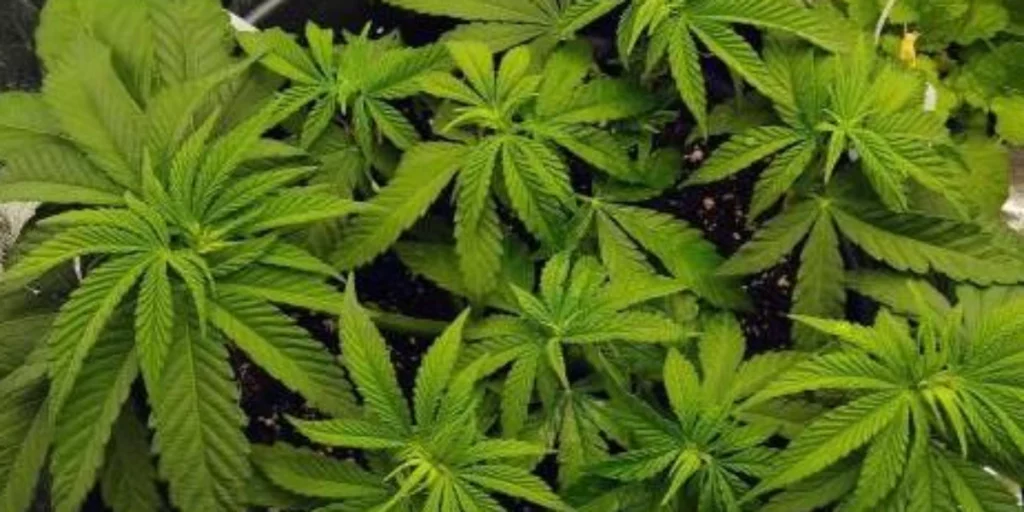
Week-by-Week Growth Plan for Lemon Orange Strain
Week 1 – Germination and Seedling Stage
Begin by soaking Lemon Orange Strain seeds in water for several hours, then place them between moist paper towels in a warm, dark environment until taproots emerge. Once visible, gently transfer the seeds into small pots with a well-draining medium while maintaining consistent warmth and humidity to establish a strong root system and set a robust foundation for future growth.
Week 2 – Early Seedling Growth
In the second week, the seedlings start showing their first true leaves and gradually increase in size. Provide gentle, indirect light and keep the soil consistently moist but not waterlogged, ensuring a stable, warm environment that supports effective photosynthesis and builds the initial strength required for rapid future development.
Week 3 – Continued Seedling Development
During week three, the seedlings continue growing larger and develop an expanded root system along with additional sets of leaves. Gradually increase light exposure and maintain a balanced watering schedule to support steady development, ensuring the plant’s structure strengthens sufficiently in preparation for the vigorous vegetative phase.
Week 4 – Vegetative Growth Begins
At the start of week four, the plant enters the vegetative phase, exhibiting noticeable increases in size and vigor as leaves expand and stems thicken. Adjust light intensity and initiate a structured watering schedule with a low dose of nitrogen-rich fertilizer to stimulate rapid growth and establish a robust framework for future bud production.
Week 5 – Accelerated Vegetative Growth
In week five, vegetative growth accelerates as the plant produces abundant foliage and stronger branches. Continue regular feeding and maintain a steady watering schedule, while employing low-stress training techniques to shape the canopy for even light distribution, thus laying a resilient foundation for the forthcoming flowering phase.
Week 6 – Preparing for Flowering
By week six, early signs of flowering appear as small buds begin to form and subtle changes in leaf coloration emerge. Adjust the nutrient regimen by reducing nitrogen and increasing phosphorus and potassium, while continuing low-stress training and closely monitoring environmental conditions to ensure the plant remains stress-free during this critical transition.
Week 7 – Transition to Flowering
During week seven, the plant shifts into the flowering phase as indoor growers switch to a 12/12 light cycle, prompting energy redirection toward bud production. Small buds start to emerge as nutrient schedules are adjusted to favor bloom-specific supplements, and stable conditions help minimize stress, preparing the plant for robust bud development.
Week 8 – Early Flowering
In week eight, the early stages of flowering become pronounced as buds form and gain density. The plant channels energy into thickening its bud clusters while nutrient delivery is fine-tuned to favor phosphorus and potassium, and constant monitoring ensures that the buds develop optimally without signs of stress or deficiency.
Week 9 – Mid-Flowering
By week nine, buds become more prominent as resin production increases and trichomes begin shifting from clear to milky. Adjust nutrient management to support vigorous bud development while avoiding nutrient burn, with frequent inspections ensuring that environmental conditions remain ideal during this critical mid-flowering stage.
Week 10 – Bud Development
In week ten, the buds are well-formed and continue maturing in both density and size, with resin production intensifying and the aromatic profile becoming more pronounced. Maintain careful nutrient management and stable environmental conditions to support complete bud development, ensuring every bud reaches its optimal potential for a superior final product.
Week 11 – Late Flowering
During week eleven, the plant enters the late flowering phase, and trichomes begin shifting further to include hints of amber, while the buds become denser and more resinous. Continue balanced nutrient delivery and maintain stable conditions to support the final burst of bud maturation, with regular checks addressing any last-minute issues before harvest.
Week 12 – Harvesting Time
In week twelve, the plant is ready for harvest as trichomes display a mix of milky and amber hues and the buds are dense and richly resinous. Carefully cut the plant, trim excess foliage, and hang the branches in a dark, well-ventilated area to dry for 7–10 days, ensuring that both flavor and potency are preserved for the next step.
Week 13-14 – Curing the Buds
During weeks thirteen and fourteen, focus on curing the harvested buds to enhance their flavor and potency. Once dried, transfer the buds into airtight glass jars and open them daily during the first week to release excess moisture, gradually reducing the frequency of openings. This careful curing process allows the buds to stabilize and develop a smoother, richer profile, ultimately yielding a premium final product that reflects the care invested throughout the entire growth cycle.
FAQs about Lemon Orange Strain
What is the typical THC content of lemon orange strain?
Lemon Orange Strain typically contains THC levels ranging from 15% to 22%, offering a balanced high that provides an energizing buzz with subtle body relaxation. This consistent potency is achieved through careful breeding and precise cultivation practices, ensuring each harvest delivers a refreshing yet satisfying experience for both recreational and medicinal users.
How long does it take for lemon orange strain to flower?
Lemon Orange Strain generally flowers within eight to ten weeks after switching to a 12/12 light cycle. This relatively short flowering period is ideal for growers seeking quick turnovers and efficient production. The auto-flowering trait ensures a smooth transition from vegetative growth to bloom, resulting in consistent yields that are especially attractive for cultivators with limited space or time.
What flavor profile can I expect from lemon orange strain?
This strain offers a refreshing, citrus-infused flavor profile characterized by bright, tangy lemon notes complemented by subtle orange and herbal undertones. Its aromatic buds deliver a smooth, crisp taste that is both invigorating and memorable, providing a sensory experience that perfectly complements its balanced, uplifting effects.

